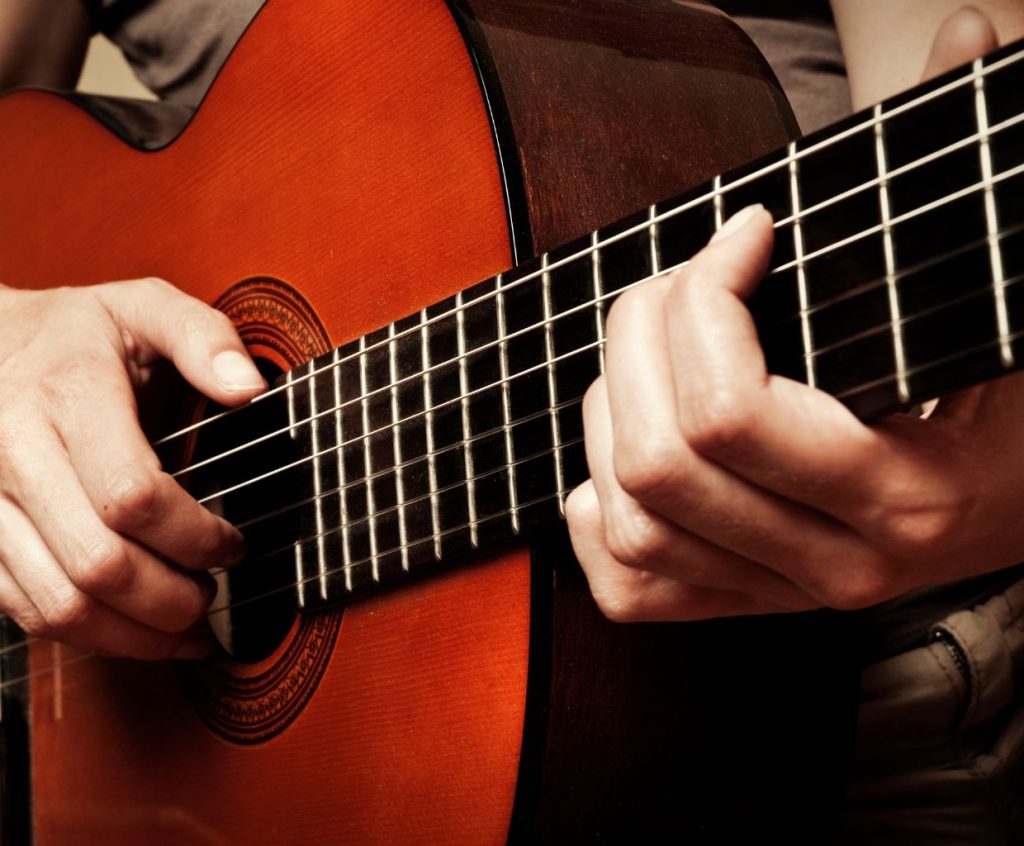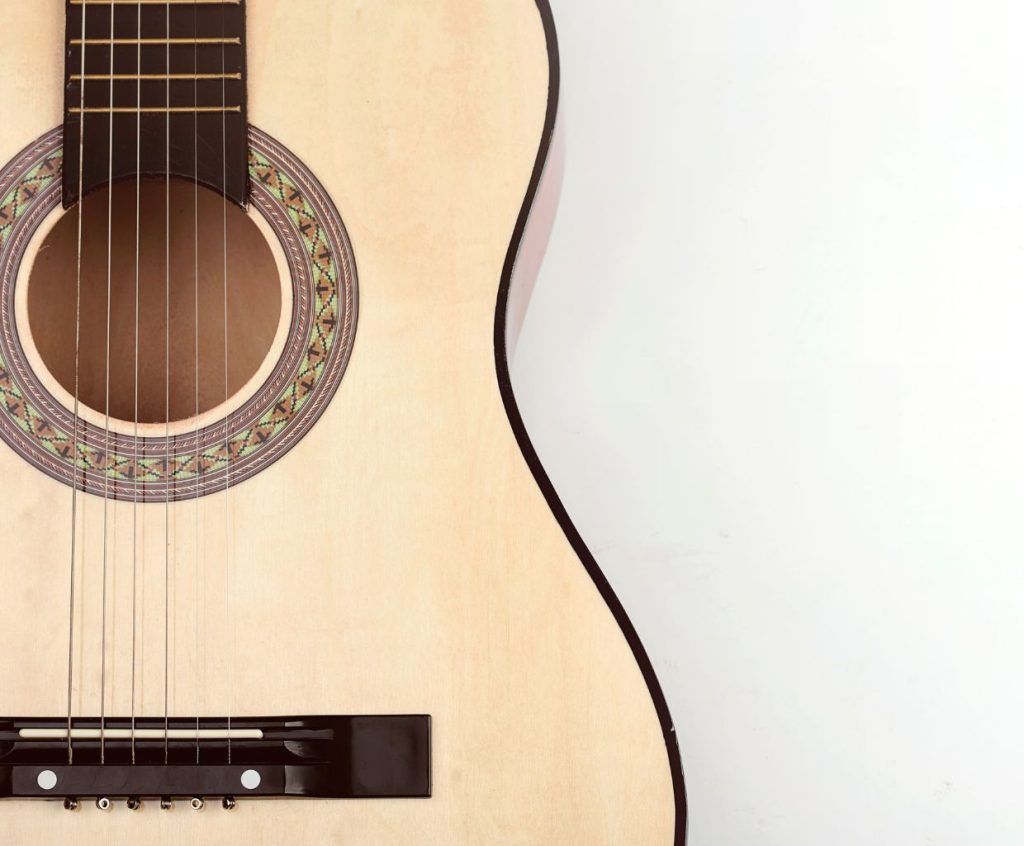11 Things Happen To You When You Learn How to Play Guitar
In this post, we’ll talk about some things that can happen to you when you start learning how to play the guitar. Some of them are just mistakes and wrong moves that maybe you haven’t noticed until now.
This is common at the beginning, so don’t be worried about them, and if you don’t suffer any of these, then good for you because that means you’ve been playing the guitar for quite a long time but if it’s an opposite and all of them or a few happen to you, try to disappear them with the time.
I’ve seen all of them in my students; I want you to know and try to avoid them in the future.
Table of Contents
- 1 11 Things Happen To You When You Learn How to Play Guitar
- 1.1 You won’t know how to follow the beat
- 1.2 You will raise the thumb of your left hand on the neck
- 1.3 How To Play Guitar – The note F (Fa) won’t sound
- 1.4 You will push the strings too hard due to not pressing correctly with the left hand
- 1.5 How To Play Guitar – You will play followed notes with the same finger
- 1.6 You’ll play followed notes with the same finger in your right hand
- 1.7 When you play with the right hand, you will move your hand too far from the strings
- 1.8 The right hand won’t have the fingers in the right place
- 1.9 You’ll play the guitar with the plectrum down or up without switching
- 1.10 You’ll feel frustrated and with anger because the guitar doesn’t sound
- 1.11 You will get bored and start looking for excuses to stop playing, or you’ll get more excited and continue with the practice
You won’t know how to follow the beat
When we start to play a song, it doesn’t matter which song; every song has a pulse, in simple words, the invariable and regular rhythm on which the notes of a musical piece are played; keep in mind that you won’t be able to follow that rhythm at the beginning. If you’ve played an instrument before, you may be able to, but if it is your first time playing one, you’ll have some trouble.
If you want to solve this as soon as possible, try to follow the rhythm of the metronome with your palms, making every beat of the palms equal to the metronome; when you make it, do it by playing the E (Mi), first string and B (Si), second string, in every beat or try it with an easy song that you are playing.
You will raise the thumb of your left hand on the neck
When you change from one musical note to another, you’ll stop holding the neck of the guitar with your thumb, don’t do it because you will lose support while you play, and it’ll be harder to find the note you’re looking for. Let’s suppose you’re playing 4 followed Fs (Fa) with the index finger, and in the next beat, you have a G (Sol) 4 times, and you have to play it with the thumb; it will be something like F-F-F-F, G-G-G-G.
As a habit, you’ll always raise the thumb of your left hand to go from one note to another, but it’s wrong; you won’t have a tactile reference of where the frets are located. The thumb is an important point of support. If you don’t leave it behind the neck, you’ll press another fret, either fret 2 or 4, when we want fret three where the G (Sol) is.
A simple solution to this problem is to go from one note to another, extending your finger without moving your thumb at the height of fret 2.
How To Play Guitar – The note F (Fa) won’t sound
The fret 1 of the first string, played with the index finger, is always a problem in the first classes; 90% of the time, it won’t sound farther than a noise. This is normal to almost everyone and happens because we don’t press the fret properly or have our fingers arched correctly; due to this, we press the fret with the softest part of our index finger.
You’re doing it incorrectly if you’re starting to play the guitar pressing with your fingers, as indicated with blue stitching in the first picture. If you look at the second picture, the fingers are arched, and the stitching indicates which part of your fingers you must press the notes: with the fingertips.
You will push the strings too hard due to not pressing correctly with the left hand
As a result of the third point, where the notes of the guitar will not sound due to a bad posture of the left hand, you’ll start to hit too hard the guitar with your right hand; this will make a shrill sound if you’re playing an acoustic or classical guitar with the fingers. You may make it sound but with a shrill sound.
When we hit the strings too hard with our right hand, we are pressing harder, too, which means both hands will be coordinated in the wrong way; when you push hard, you’ll press harder the frets, and as a result, it will sound but badly. That’s why you have to try to follow the next steps:
- Try to press correctly, as you can see in the right picture from above, with the fingertips.
- Press hard without feeling pain in your wrist or forearm of your left hand; if it hurts, you’re doing it wrong.
- Pull the strings, not too hard but either too weak.
How To Play Guitar – You will play followed notes with the same finger
Due to all the new information you’re receiving, you will start to omit a few aspects because you’ll be paying attention to the beat, notes, music sheet, and posture if you are pressing the frets properly or playing hard strident. You will forget that every fret has its finger.
When we start to play the guitar in the zone of the first frets, you should know that every fret has a finger; in this case, the string doesn’t matter; this rule changes later when you are at a more advanced level, but for now, the rule is: The first fret with finger 1, second fret with finger 2, third fret with finger three and the fourth with the finger 4.
You’ll play followed notes with the same finger in your right hand
This is another habit, especially if we don’t have the fingers of our right hand supported when we try to place them on the top (see point 8); for example, if we play a note in the first string, a habit of some guitarists is to put the index finger and keep playing the rest of the notes with it. Still, the ideal is an alternate the index finger with the middle finger when you’re a beginner.
When you play with the right hand, you will move your hand too far from the strings
This one is prevalent too. Playing the guitar with your fingers, you’ll move your hand away approximately 15cm or more from where the sound hole is. You unconsciously pull a note to the front when you play a note.
This remoteness includes your forearm; you have to pay attention to this detail; the only part of your body that needs to move when you play in the strings is your fingers; the rest of your body is still.
The right hand won’t have the fingers in the right place
In the beginning, the habit of a lot of guitarists is to support the fingers of their right hand on the top of the guitar due to it is more comfortable. If we play with a plectrum, it’s possible that it won’t be a problem, but if we’re playing with our fingers in the right hand, it’ll be troublesome.
The right-hand needs to have the fingers arched in the air at a small distance from the sharpest strings and the thumb resting on the sixth or fifth string.
You’ll play the guitar with the plectrum down or up without switching
If you’re playing an electric guitar, playing with attacks of plectrum down or up is a habit we must avoid at all costs when we start to play the guitar. As a general rule, we’ll always alternate plectrum down and up. The intense times will be plectrum down, 1 and 3 in 4/4 compass, and the weak ones plectrum up, 2 and 4.
You’ll feel frustrated and with anger because the guitar doesn’t sound
You thought that playing the guitar was going to be easy; then you noticed that you need to put in the endeavor and a lot of hours per week if you want to make it sound; the problem is that we are too impatient, and we want to learn fast to have the results as soon as possible, we want to run the marathon the first day when last week we were eating hamburgers and drinking soda while we were watching TV.
Sometimes you need dedication, time, and effort but don’t worry; you can do it!
You will get bored and start looking for excuses to stop playing, or you’ll get more excited and continue with the practice
Here is where we start to get into the muddy territory. When we are learning how to play the guitar, things can be challenging and not fun at all. In the beginning, you’ll leave it aside because you will be discouraged and thinking of a future where you aren’t playing the guitar in activities that don’t make us “waste time.” Finally, you leave it under the bed or hang it on your wall for decorating.
The other option is that you are so excited to continue that you can overcome the obstacles.



